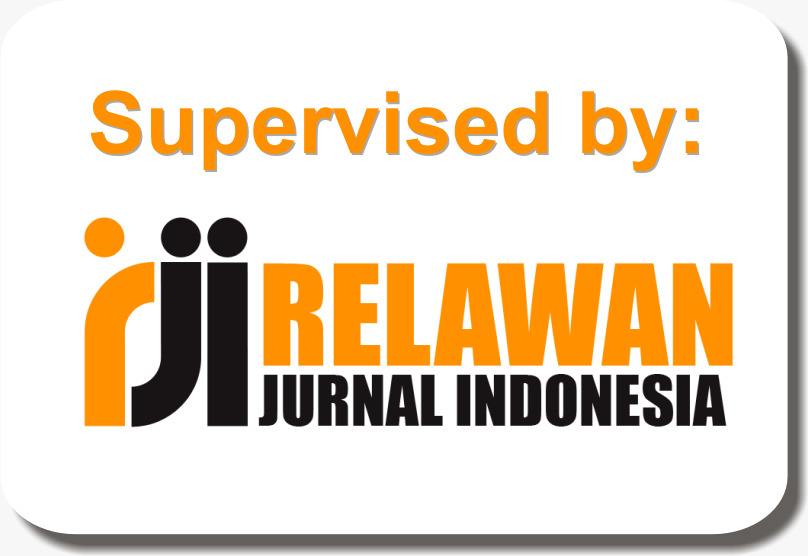DETECTION OF ADULTERATION IN COCONUT MILK USING CUCKOO SEARCH-OPTIMIZED XGBOOST ON HIGH-DIMENSIONAL FTIR SPECTRAL DATA
Abstract
Keywords
Full Text:
PDFReferences
A. Rohman and Y. B. C. Man, ÔÇťFourier transform infrared (FTIR) spectroscopy for analysis of extra virgin olive oil adulterated with palm oil,ÔÇŁ Food Res. Int., vol. 45, no. 1, pp. 117ÔÇô121, 2012.
M. Bevilacqua, R. Bro, F. Marini, ├ů. Rinnan, M. A. Rasmussen, and T. Skov, ÔÇťRecent chemometrics advances for foodomics,ÔÇŁ TrAC Trends Anal. Chem., vol. 52, pp. 1ÔÇô11, 2013.
T. Chen and C. Guestrin, ÔÇťXGBoost: A scalable tree boosting system,ÔÇŁ in Proc. 22nd ACM SIGKDD Int. Conf. Knowledge Discovery Data Mining, 2016, pp. 785ÔÇô794.
A. Natekin and A. Knoll, ÔÇťGradient boosting machines, a tutorial,ÔÇŁ Front. Neurorobot., vol. 7, p. 21, 2013.
J. Bergstra and Y. Bengio, ÔÇťRandom search for hyper-parameter optimization,ÔÇŁ J. Mach. Learn. Res., vol. 13, no. 1, pp. 281ÔÇô305, 2012.
X. S. Yang and S. Deb, ÔÇťCuckoo search: recent advances and applications,ÔÇŁ Neural Comput. Appl., vol. 24, no. 1, pp. 169ÔÇô174, 2014.
X. S. Yang and S. Deb, ÔÇťCuckoo search via L├ęvy flights,ÔÇŁ in Proc. World Congr. Nature Biol. Inspired Comput. (NaBIC), 2009, pp. 210ÔÇô214.
A. H. Gandomi, X. S. Yang, and A. H. Alavi, ÔÇťCuckoo search algorithm: a metaheuristic approach to solve structural optimization problems,ÔÇŁ Eng. Comput., vol. 29, no. 1, pp. 17ÔÇô35, 2013.
Y. Zhang and X. S. Yang, ÔÇťCuckoo search for hyperparameter optimization in deep learning,ÔÇŁ Appl. Soft Comput., vol. 94, p. 106450, 2020.
A. McDermott, N. Deighton, and J. L. Walsh, ÔÇťMachine learning for mid-infrared spectroscopy-based protein prediction in milk,ÔÇŁ J. Dairy Sci., vol. 104, no. 2, pp. 1848ÔÇô1858, 2021.
├ů. Rinnan, F. van den Berg, and S. B. Engelsen, ÔÇťReview of the most common pre-processing techniques for near-infrared spectra,ÔÇŁ TrAC Trends Anal. Chem., vol. 28, no. 10, pp. 1201ÔÇô1222, 2009.
A. Savitzky and M. J. Golay, ÔÇťSmoothing and differentiation of data by simplified least squares procedures,ÔÇŁ Anal. Chem., vol. 36, no. 8, pp. 1627ÔÇô1639, 1964.
Y. Zhang and X. S. Yang, ÔÇťCross-disciplinary applications of cuckoo search algorithm,ÔÇŁ Arch. Comput. Methods Eng., vol. 25, no. 4, pp. 1055ÔÇô1075, 2018.
P. Mishra and D. Passos, ÔÇťA synergistic approach to FTIR spectra and machine learning for food authenticity,ÔÇŁ Food Chem., vol. 343, p. 128485, 2021.
S. Lohumi, H. Lee, M. S. Kim, J. Qin, and B. K. Cho, ÔÇťRaman spectroscopy coupled with chemometrics for food authentication: A review,ÔÇŁ TrAC Trends Anal. Chem., vol. 107, pp. 196ÔÇô208, 2018.
H. Wijaya et al., ÔÇťApplication of FTIR spectroscopy for rapid and non-destructive analysis of adulteration in coconut milk,ÔÇŁ J. Food Compos. Anal., vol. 97, p. 103768, 2021.
R. J. Barnes et al., ÔÇťStandard normal variate transformation and de-trending of near-infrared diffuse reflectance spectra,ÔÇŁ Appl. Spectrosc., vol. 43, no. 5, pp. 772ÔÇô777, 1989.
M. Kuhn and K. Johnson, Applied Predictive Modeling. New York: Springer, 2013.
D. M. Powers, ÔÇťEvaluation: From precision, recall and F-measure to ROC, informedness, markedness & correlation,ÔÇŁ J. Mach. Learn. Technol., vol. 2, no. 1, pp. 37ÔÇô63, 2020.
P. Probst et al., ÔÇťHyperparameters and tuning strategies for random forest,ÔÇŁ WIREs Data Min. Knowl. Discov., vol. 9, no. 3, p. e1301, 2019.
X. S. Yang, Nature-Inspired Metaheuristic Algorithms, 2nd ed. Frome, UK: Luniver Press, 2010.
A. H. Gandomi and X. S. Yang, ÔÇťChaotic bat algorithm,ÔÇŁ J. Comput. Sci., vol. 5, no. 2, pp. 224ÔÇô232, 2014.
S. M. Lundberg and S. I. Lee, ÔÇťA unified approach to interpreting model predictions,ÔÇŁ in Adv. Neural Inf. Process. Syst., vol. 30, 2017.
J. Dem┼íar, ÔÇťStatistical comparisons of classifiers over multiple data sets,ÔÇŁ J. Mach. Learn. Res., vol. 7, pp. 1ÔÇô30, 2006.
P. Virtanen et al., ÔÇťSciPy 1.0: Fundamental algorithms for scientific computing in Python,ÔÇŁ Nat. Methods, vol. 17, pp. 261ÔÇô272, 2020.
A. Rohman and Y. B. Che Man, ÔÇťFTIR spectroscopy combined with chemometrics for analysis of lard adulteration in virgin coconut oil,ÔÇŁ Food Anal. Methods, vol. 5, no. 4, pp. 828ÔÇô834, 2012.
A. M. Marina et al., ÔÇťMonitoring virgin coconut oil adulteration by FTIR spectroscopy and chemometrics,ÔÇŁ J. Food Sci. Technol., vol. 56, no. 4, pp. 2183ÔÇô2192, 2019.
P. M. Santos et al., ÔÇťChemometrics and FTIR spectroscopy: A team to fight food fraud,ÔÇŁ TrAC Trends Anal. Chem., vol. 127, p. 115877, 2020.
O. I. Mba et al., ÔÇťChallenges in infrared spectroscopy for food authentication,ÔÇŁ Crit. Rev. Food Sci. Nutr., vol. 61, no. 5, pp. 826ÔÇô854, 2021.
X. Zhang et al., ÔÇťIntelligent FTIR spectroscopy for food authentication: A tutorial review,ÔÇŁ Anal. Chim. Acta, vol. 1193, p. 339405, 2022.
E. C. Y. Li-Chan, ÔÇťThe basics of infrared spectroscopy for food quality analysis,ÔÇŁ Food Chem., vol. 217, pp. 342ÔÇô353, 2017.
A. Rohman et al., ÔÇťFTIR-based rapid detection of coconut milk adulteration: Recent advances,ÔÇŁ J. Food Compos. Anal., vol. 108, p. 104411, 2022.
R. R├şos-Reina et al., ÔÇťPreprocessing of FTIR spectra for food authentication: A comparative study,ÔÇŁ Chemometr. Intell. Lab. Syst., vol. 212, p. 104287, 2021.
D. Suhandy et al., ÔÇťData fusion of FTIR and NIR spectroscopy for coconut products authentication,ÔÇŁ Food Control, vol. 145, p. 109432, 2023.
J. Wang et al., ÔÇť1D-CNN for FTIR spectral classification of edible oils,ÔÇŁ Spectrochim. Acta A, vol. 285, p. 121891, 2023.
A. M. Marina et al., ÔÇťFTIR spectral markers for traditional vs industrial coconut milk,ÔÇŁ LWT-Food Sci. Technol., vol. 173, p. 114362, 2023.
Y. B. Che Man et al., ÔÇťChemometric analysis of coconut milk stabilizers using FTIR,ÔÇŁ J. Food Sci., vol. 87, no. 5, pp. 1988ÔÇô1999, 2022.
T. Pirak et al., ÔÇťGeographical discrimination of Southeast Asian coconut milk by FTIR-chemometrics,ÔÇŁ Food Chem., vol. 404, p. 134612, 2023.
E. Hatzakis et al., ÔÇťNMR-FTIR combined approach for coconut lipid analysis,ÔÇŁ Talanta, vol. 253, p. 123943, 2023.
X. Zhang et al., ÔÇťReal-time quality control of coconut milk production using portable FTIR,ÔÇŁ J. Food Eng., vol. 337, p. 111234, 2023.
DOI: https://doi.org/10.29100/jipi.v10i3.8376
Refbacks
- There are currently no refbacks.

This work is licensed under a Creative Commons Attribution-ShareAlike 4.0 International License.
Website :áhttps://jurnal.stkippgritulungagung.ac.id/index.php/jipi/index
Emailá: jipi@stkippgritulungagung.ac.id

This work is licensed under a Creative Commons Attribution-ShareAlike 4.0 International License.




